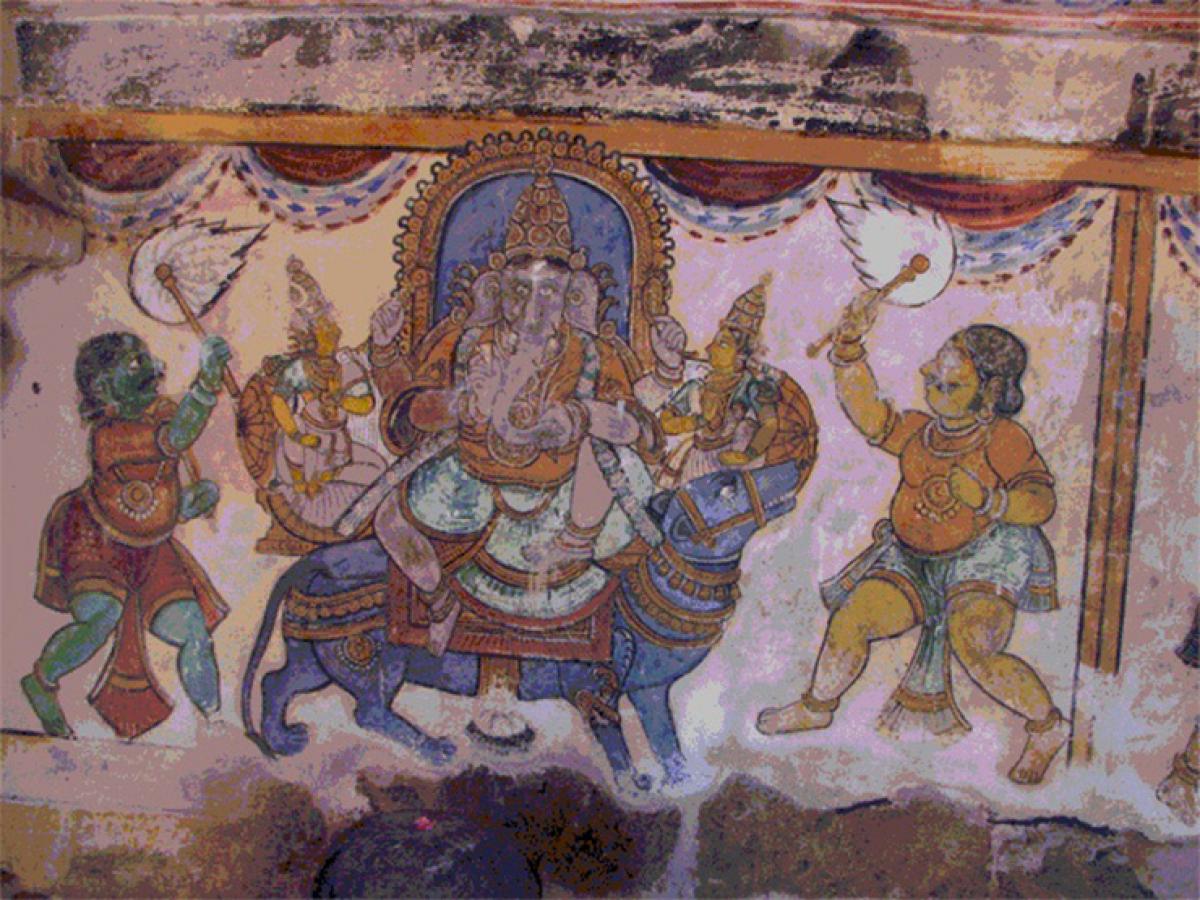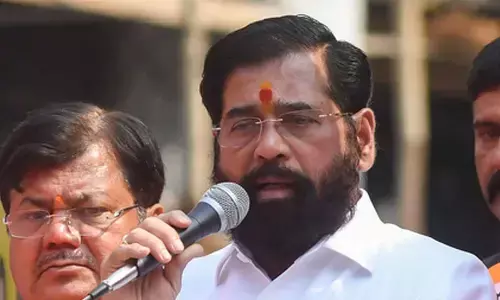Major developments in Ancient India

Any account of ancient India is incomplete without referring to the two dynasties of South India i.e. the Pallavas and the Cholas and their contribution to art, architecture, administration and conquests. Quite a few dynasties rose in the South from the early centuries of the Christian era. Among them the Pallavas were great patrons of art and architecture.
The Pallavas and the Cholas
Any account of ancient India is incomplete without referring to the two dynasties of South India i.e. the Pallavas and the Cholas and their contribution to art, architecture, administration and conquests. Quite a few dynasties rose in the South from the early centuries of the Christian era. Among them the Pallavas were great patrons of art and architecture.
The ‘ratha’ at Mahabalipuram style of temples built by them were fine examples of rock-cut temples. The Pallavas also built structural temples like the Kailashanath and Vaikunthperumal temples at Kanchipuram. The Kailashanath temple is a huge structure with thousands of images and is said to be the “largest single work of art ever undertaken in India”.

There is also a set of bas reliefs found at Mahabalipuram (Mamallapuram) which is attributed to the pallava period. The Pagodas built at Mahabalipuram go back to the first century AD. Temple building activity flourished in India from the 5th century AD onwards.
While the North Indian temples were built in the Nagara style consisted of the shikaras (spiral roofs), the garbhagriha (sanctum) and the mandap (pillared hall), the temples in the South were built in the Dravida style completed with vimana or shikhara, high walls and the gateway topped by gopuram. After the Pallavas (6th to 8th century AD) the tradition of building temples was further developed by the Cholas (l0th – 12th century AD) in the south.
Do you know that the temple was the central place in the village? It was the gathering place for the villagers who would come here everyday and exchange ideas and discuss all matters of common interests. It served as a school too. During festival days dances and dramas were also performed in the temple courtyard.
The achievements of the Cholas also lie in their conquests across the seas and developing democratic institutions for governance at the village level. The village panchayat called sahha or ur had extensive powers. It had control over finances too. This body included several committees which looked after various aspects of village administration.
A very detailed account of the functioning of the sabhas is available from one of the Chola inscriptions. The Chola rulers were also great builders. The Dravida style of temple architecture reached its zenith under the Chola rulers. One of the finest example of this style is the Rajarajeshwar or Brihadeshwara temple.
During this period one also notices great achievements in the field of sculpture. Great progress was made in literature both religious and secular. Sanskrit also became the language of the courts in many parts of the country. Tamil literatures also made great progress. The Alvars and the Nayanars, the Vaishnavite and Shaivite saints made lasting contributions to it.
Inspite of the dominants position of Sanskrit in most parts of the country, this period marks the beginning of many Indian languages as well as distinct scripts in different parts of the country. In short, we can say that by the time, the ancient period of Indian history came to an end, India had developed a culture which was marked by features that have characterized it ever since.
Transformation of Vedic Brahmanism to Puranic Brahmanism
The transformation of the ancient brahmanical faith into modern Hinduism can be regarded as the most distinguishing feature from the Gupta period onwards. Buddhism no longer received as much royal patronage as it did earlier. Brahmanism had come to the forefront. The Gupta rulers especially provided filling to the Bhagavata Sect of Hinduism.
They called them selved Bhagavatas, worshipped Lord Vishnu performed Asvamedha yajnas, gave large donations to brahmanas, and built many temples. The Puranas were finally compiled in this age. Vishnu emerged as the god of devotion and came to be represented as the preserver of dharma.
Numerous legends gathered around him and a whole Purana called Vishnu Purana was compiled in his honour. Similarly a law book called the Vishnusmriti was also named after him. Above all, by the fourth century AD there came into being a famous Vaishnava work called ‘Shrimadbhagavad-purana’ which taught devotion to Lord Krishna.
A few Gupta kings also were worshippers of Shiva, the god of destruction. Bhagavatism which was a contemporary to Buddhism and Jainism in origin and owed its birth to the stream of thought which began with Upanishads reached its zenith and became the most popular sect during this age.
The theory of Ten Avatars or incarnations of the supreme god Vishnu came to be accepted and among them, Krishna was considered the most important. Besides Vishnu, Brahma, Surya, Kartikeya, Ganesha, Durga, Lashmi, Saraswati and others were also worshipped as were lesser gods like Indra, Varuna, Yama etc.
The snakes, the yakshas, and the Gandharvas also continued to be revered. Even animals, plants, rivers and mountains were looked upon with reverence and cities like Banaras and Prayag became places of pilgrimage. Idol worship became popular. Thus the prominent features of modern Hinduism took shape during the Gupta period.
Although Buddhism was on its decline, yet it continued to have its following. Besides the artistic creations of Ajanta and Ellora, the images of Sarnath Buddha belonging to this time show that Buddhism was also quite popular. Even Jainism commanded some following during the Gupta period.
Christianity in India
According to tradition, christianity was brought to India by Saint Thomas in the first century A.D. According to legends, the Parthian king Gondophernes (C. 19- 45 A.C.) sent a messanger to Syria to look for a skilful architect who would build for him a new city. The messanger returned with St. Thomas, who converted him and many members of his court to Christianity.
The truth of the legend is doubtful. It was most probably the frequent trade and movement between India and the west which was responsible for bringing this disciple of Lord Christ to India. The merchants, traders and even craftmen frequently travelled along popular land and sea routes. St. Tomas preached christianity in many parts of India.
He was killed at Mylapore (near Madras). The tomb of St. Thomas is still to be found at the same place. A large community of christians known as Syrian Christians contine to reside in Kerala even today. The Christian Church has two major divisions-the Roman Catholic church and the Protestant church.
The holy book of the Christians is the Bible. The Bible contains two parts: the old Testament and the New Testament. The Bible today is available in all major langauges spoken in our country. Today, we have over one and a half crore Christians in India.
Several charitable institutions under their patronage are flourishing in all parts of our country. Perhaps the most famous Christian social worker, he has contributed a great deal for the welfare of the poor and home less in our country.














